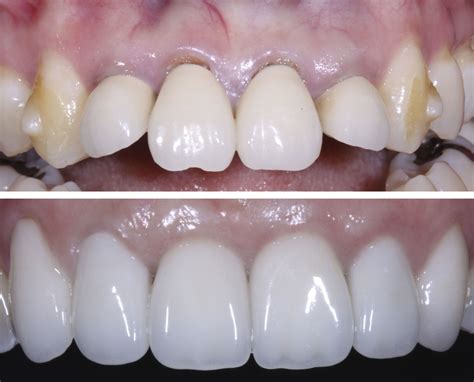How Is A Crown Replaced
Ronan Farrow
Apr 04, 2025 · 3 min read

Table of Contents
How is a Dental Crown Replaced? A Comprehensive Guide
Getting a dental crown is a common procedure that helps restore damaged or decayed teeth. But what happens when your crown needs replacing? This comprehensive guide explains the entire process, from understanding the need for replacement to the aftercare involved.
Understanding When a Dental Crown Needs Replacing
Several factors can necessitate a crown replacement. These include:
Signs Your Crown Needs Replacing:
- Chipped or Fractured Crown: A noticeable chip or crack can compromise the crown's structural integrity and lead to further damage.
- Loose or Wobbly Crown: A loose crown can cause discomfort and increase the risk of infection.
- Discoloration or Staining: While some staining is normal, significant discoloration can indicate decay beneath the crown or problems with the underlying tooth.
- Receding Gums: Gum recession can expose the margin of the crown, making it more susceptible to decay and requiring replacement.
- Old or Worn-Out Crown: Crowns, like all dental restorations, have a lifespan. Older crowns may become weakened over time.
The Crown Replacement Procedure: A Step-by-Step Overview
Replacing a dental crown involves several key steps:
1. Examination and Consultation:
Your dentist will conduct a thorough examination of your mouth, focusing on the affected crown and the underlying tooth. X-rays might be taken to assess the tooth's condition. This consultation helps determine the best course of action.
2. Removal of the Old Crown:
Your dentist will carefully remove the old crown using specialized dental instruments. This process is usually painless, thanks to local anesthesia.
3. Tooth Preparation:
Once the old crown is removed, the dentist will assess the underlying tooth. Any decay or damage will be addressed. The tooth may require further preparation to ensure a proper fit for the new crown. This might include removing some tooth structure to create a stable foundation for the new crown.
4. Impression Taking:
An impression of the prepared tooth is taken using a special material. This impression is sent to a dental laboratory where the new crown will be fabricated.
5. Temporary Crown Placement (Optional):
A temporary crown is often placed to protect the tooth during the fabrication process. This temporary crown will be removed before the permanent crown is fitted.
6. Permanent Crown Placement:
Once the new crown is ready (typically within a few weeks), the dentist will remove the temporary crown and cement the new, permanent crown into place. The dentist will ensure the fit and bite are correct before finalizing the placement.
Aftercare for a Replaced Crown
Proper aftercare is vital for the longevity of your new crown. Follow your dentist's instructions carefully, but generally, you should:
- Maintain excellent oral hygiene: Brush and floss regularly to prevent further decay and gum disease.
- Avoid biting on hard objects: This can damage the crown.
- Eat a balanced diet: This aids in overall oral health.
- Regular dental checkups: Schedule regular checkups for professional cleaning and monitoring.
Choosing the Right Material for Your New Crown
Various materials are used for dental crowns, each with its own advantages and disadvantages. Discuss the options with your dentist to determine which material best suits your needs and budget.
By understanding the process of replacing a dental crown and following the aftercare instructions, you can ensure the long-term health and functionality of your restored tooth. Remember, consistent dental care is crucial for maintaining a healthy smile.
Featured Posts
Also read the following articles
| Article Title | Date |
|---|---|
| How Do Alexander Mcqueen Sneakers Fit | Apr 04, 2025 |
| How Does An Emergency Pick Up Order Work | Apr 04, 2025 |
| How Does Bermuda Get Electricity | Apr 04, 2025 |
| How Fast Do Clay Pigeons Fly | Apr 04, 2025 |
| How Do I Know If I Was Wrongfully Terminated | Apr 04, 2025 |
Latest Posts
-
How Long After Drinking Can You Pass Interlock
Apr 05, 2025
-
How Long After Divorce Can You Remarry In Wisconsin
Apr 05, 2025
-
How Long After Dental Implants Can I Drink Alcohol
Apr 05, 2025
-
How Long After Dental Bone Graft Can You Drink Alcohol
Apr 05, 2025
-
How Long After Concrete Can You Walk On It
Apr 05, 2025
Thank you for visiting our website which covers about How Is A Crown Replaced . We hope the information provided has been useful to you. Feel free to contact us if you have any questions or need further assistance. See you next time and don't miss to bookmark.
